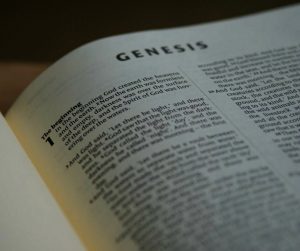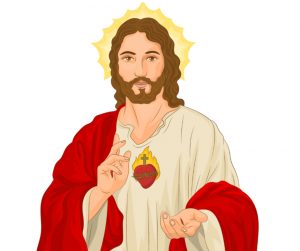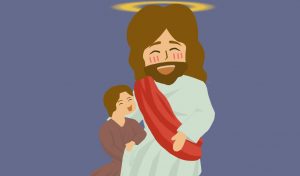Differences Between The First and Second Creation Stories: The first two chapters of Genesis have occasionally given detractors with fuel. Such people see the Bible tales as offering two separate histories of man’s and the world’s creation. Following a scientific examination of both stories, it becomes clear that the two perspectives may not be in conflict or mutually incompatible, but rather two poetic representations of the same paradigm, or two shades of the same hue.
Perhaps they will even give a historical explanation for how creation occurred in a way that has ramifications “for the private practice of religion and the public concerns of human beings in the city.” Whatever your viewpoint, it’s fascinating to consider a comparison of these two chapters and consider what, if anything, the author was attempting to convey.

Recommended: How to find out God’s plan for your life
Differences between the first and second account of creation
1. The Stories’ Purpose: There is just one protagonist in the first story: God. Given his extraordinary exploits, it’s evident that the first story’s goal is to exalt God (as creator). In the second scenario, however, there are several characters, each of whom is doing or saying something in turn.
The moral of this second narrative is that man must work hard for a living, the woman suffers, and wild creatures pose a threat to man’s survival. That is, it is an etiological myth that explains humanity’s fate and why the world is the way it is. Looking at the statistics of words and their dispersion reveals the disparities between the stories.
In the first narrative, the guy comes after 317 words (or 63% of the text), yet he is only referenced in 102 words or 20% of the text. In the second narrative, however, the man appears after 29 words (4 percent of the text) and occupies more than 80% of the text. In a nutshell, one narrative is about God, while the other is about the man.

Recommended: How to know what you are passionate about
2. The Battle of Time and Space: The first tale is governed by time (day one, day two, and so forth). Furthermore, the luminaries were constructed to allow the man to keep track of time (not for warming or ripening fruits, for example). There are many forms of time: linear (verses 1-7), cyclical (evening, morning), secular time of working days, and holy time (day seven), which is a “quality-time” from a theological standpoint rather than a social one.
Apart from God, time is the only thing that regulates the universe, and there is no such thing as a distinct space. The other narrative, on the other hand, is focused on space (with the exception of the first line of the account). The story’s setting, the Garden of Eden, is given geographic complexity by the narrator, who uses four rivers to help him do so (and lands).

Furthermore, the fact that man is banished from his innate area adds to the significance of the place, emphasizing the value of the realm in one’s existence. While holy days commemorate the life of a devout person, territory commemorates the more commonplace man (who disregards God’s will).
3. The Influence of Words: The word of God is used by God to create the world in the first tale. The power of words is undeniable. Speech is a heavenly instrument that predates the creation of the universe. The end of their creation was marked by the names that God gave to His actions, such as day or sky. God blessed His creatures—fish, bird, man, and the seventh day—with the power of the word, demonstrating that the world’s life is dependent on the word.

And only God has the authority to speak. In contrast to the first myth, God does not utilize his capacity to speak as a tool of creation in the second; rather, man uses it to establish his own superiority. The term has no divine value, yet God gives the creatures to man in the hopes that he would name them.
To put it another way, the first narrative says that language is divine, implying that it is a product of creation, but the second myth implies that language is a man-made phenomenon.
Recommended: Roles and Importance of Children in the family
4. Law and Order: The first tale is designated by the numbers 1, 2, 3, and so on, and it concludes on the seventh day. The “rules of Heaven” (Jer. 33:25; Job 38:33), as well as the “laws” required for creation, imply order in the formation of the luminaries and stars (Prov. 8:27-29).

Despite the fact that the phrases ‘law’ and ‘order’ do not occur in the first narrative, it is apparent that they were present from the start. God, their Creator, is not only the Lord of Time but also the Lord of Order, and the stars have laws and order. In the second scenario, however, there is no order (even if it is suggested) and no rule.
In truth, God established a prohibition (not to eat from the Tree), but within a short period of time, this commandment is broken, and chaos reigns supreme. In summary, God is associated with time and order, whereas man is associated with space and disorder.
Also see: How to become a successful entrepreneur
5. The Importance of Numbers: The spine of the first narrative is numbering, and their arrival at the conclusion of each paragraph denotes the story’s speed or dynamics. There are 469 words in the first narrative, including 10 number-words in the following order: 1 2 3 2 4 5 6 7 7 7.
That means the text’s proportion of number words is 2.016. There are 640 words in the second tale, but only 6 are number words (4 1 2 3 4 1), resulting in a proportion of 0.937. This disparity in number usage, which contemporary researchers refer to as “stylometry,” indicates attitudes toward science (and order).
While God did not create numbers, He did something with them: He gave them quality. The number 7 is associated with God, as well as blessing and inactivity, all of which represent holiness. As a result, the number 7 was transformed from a quantity symbol to a quality symbol. God is accompanied by the number 7 from the beginning to the end of time; 7 denotes divine.
Also see: Best books to learn about leadership
6. Sermons Versus Stories: The two stories have quite distinct structures. There are a lot of formulae in the first narrative. Every paragraph starts and finishes with formula (and God said, let there be, and God saw that it was good, etc.). In reality, the material is formulaic for around 20% of the time.
As a result, it has a distinct, unique, and “tight” structure. The second narrative, on the other hand, is “loose” in terms of structure (but like any story, there is an exposition, a change, and an end). As a result, it’s considered that the first narrative originated as a sermon, most likely to commemorate a new year, whereas the second story was just a story.
The second story is about a narrator’s skill, whereas the first is about a preacher’s speech (a priest and a prophet).
Recommended: Ways of promoting national unity and integrity
Conclusion
So, in each of these chapters, God solves comparable difficulties in somewhat different ways, leading us to wonder what the author is attempting to reach or achieve. The chapters appear to be contradictory, but as in previous cases, one can see how Genesis 2 changes from Genesis 1, as God, adjusts his own decisions regarding creation through time.
Alternatively, the second tale may not be a different account, but rather a later or more extensive look at the creation of the planet and humans. Because man and woman are specifically made in the image of God in Genesis 1, and it is not stated how (spiritually, emotionally, physically), it appears they are given a higher status than in Genesis 2 when the man is produced from the dust and woman from man.
However, if Genesis 2 is a more thorough description of Genesis 1, this might explain how two persons made in God’s image were spiritually created (as in “bara”) but then physically “molded” by God like clay on a potter’s wheel. This might be seen as indicating more than one facet of mankind. It also reflects man’s ability to be arrogant and humble at the same time. We are made in God’s image, yet we should not exaggerate our worth because God produced us from dust.

Edeh Samuel Chukwuemeka, ACMC, is a lawyer and a certified mediator/conciliator in Nigeria. He is also a developer with knowledge in various programming languages. Samuel is determined to leverage his skills in technology, SEO, and legal practice to revolutionize the legal profession worldwide by creating web and mobile applications that simplify legal research. Sam is also passionate about educating and providing valuable information to people.